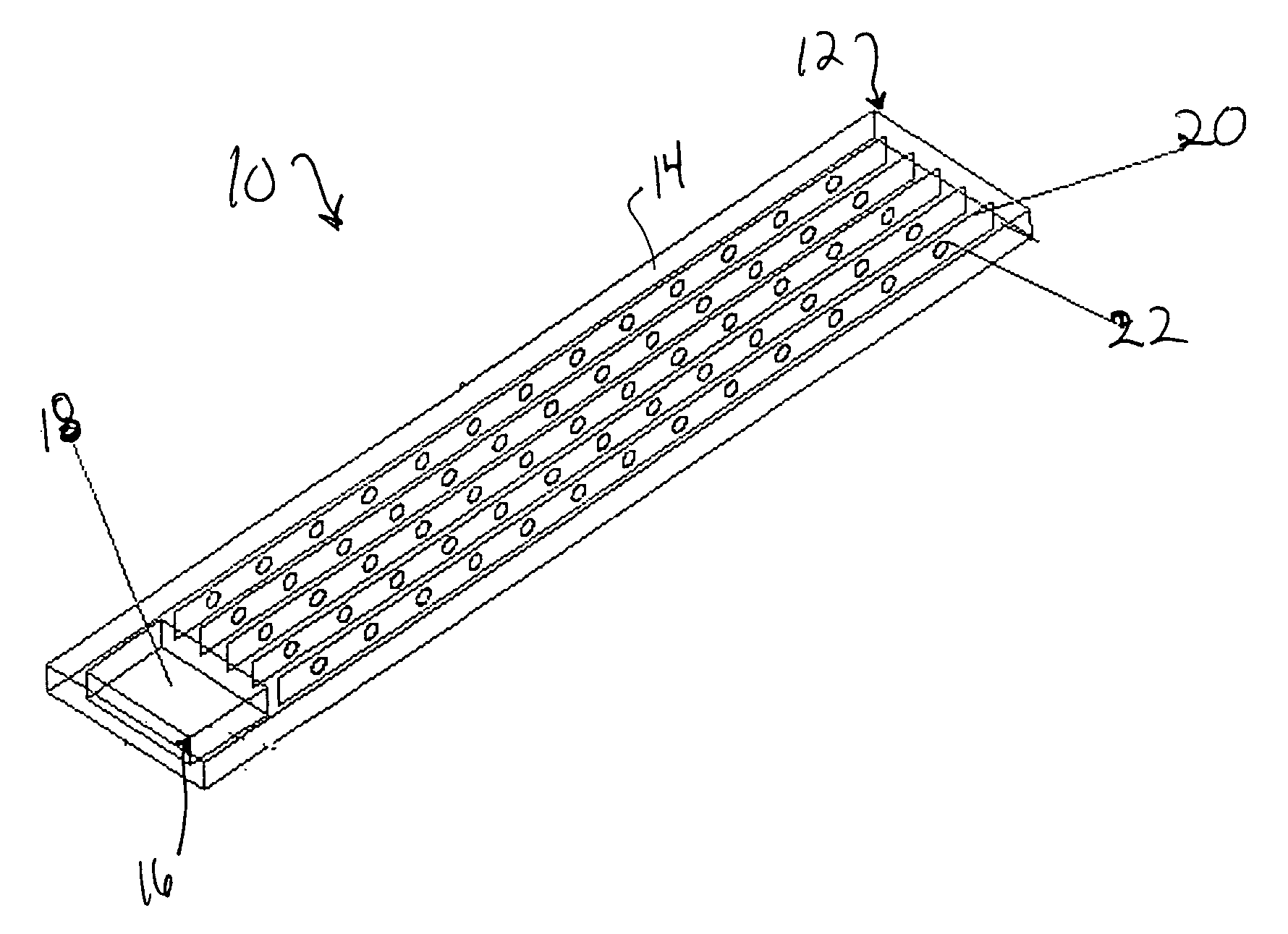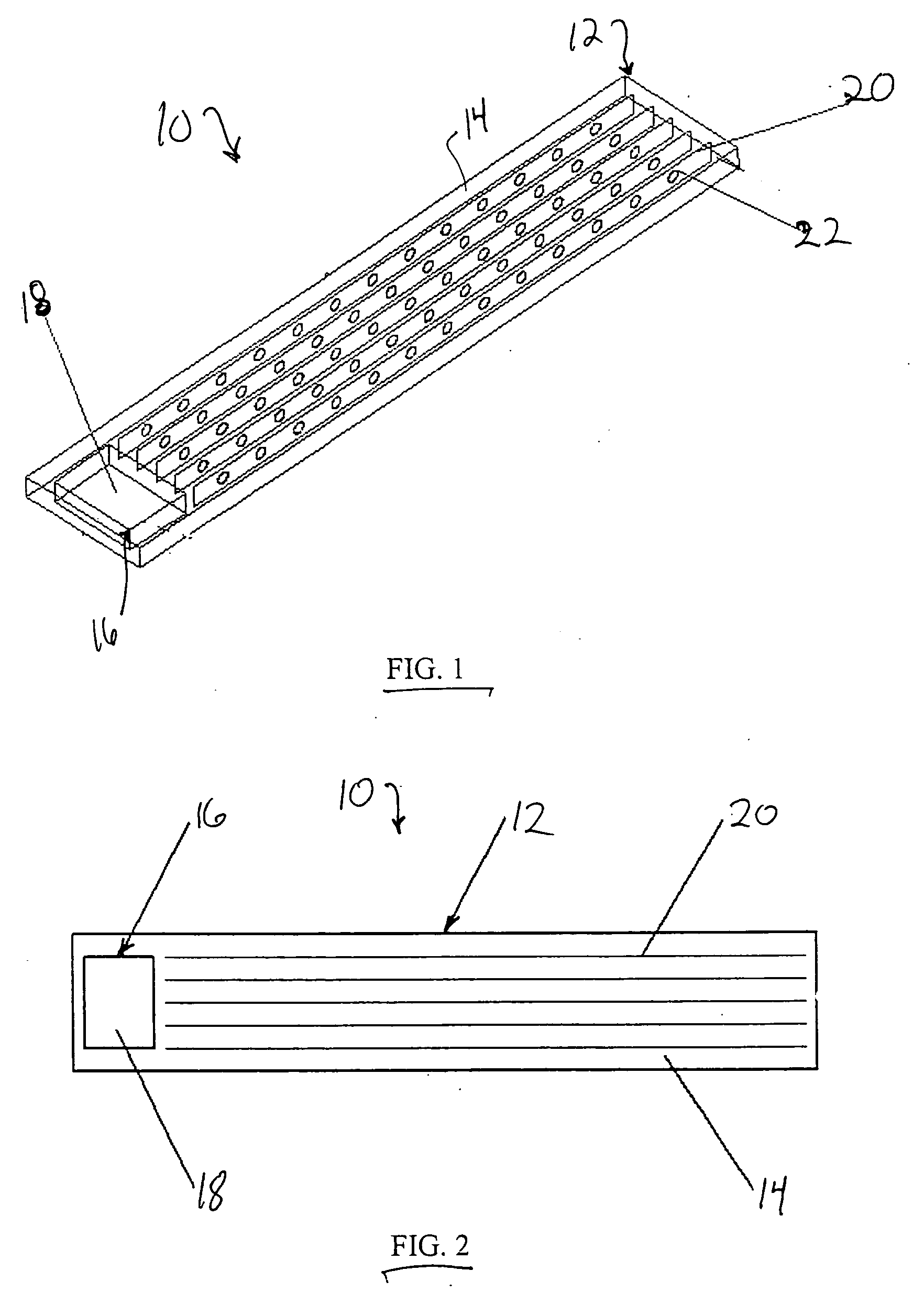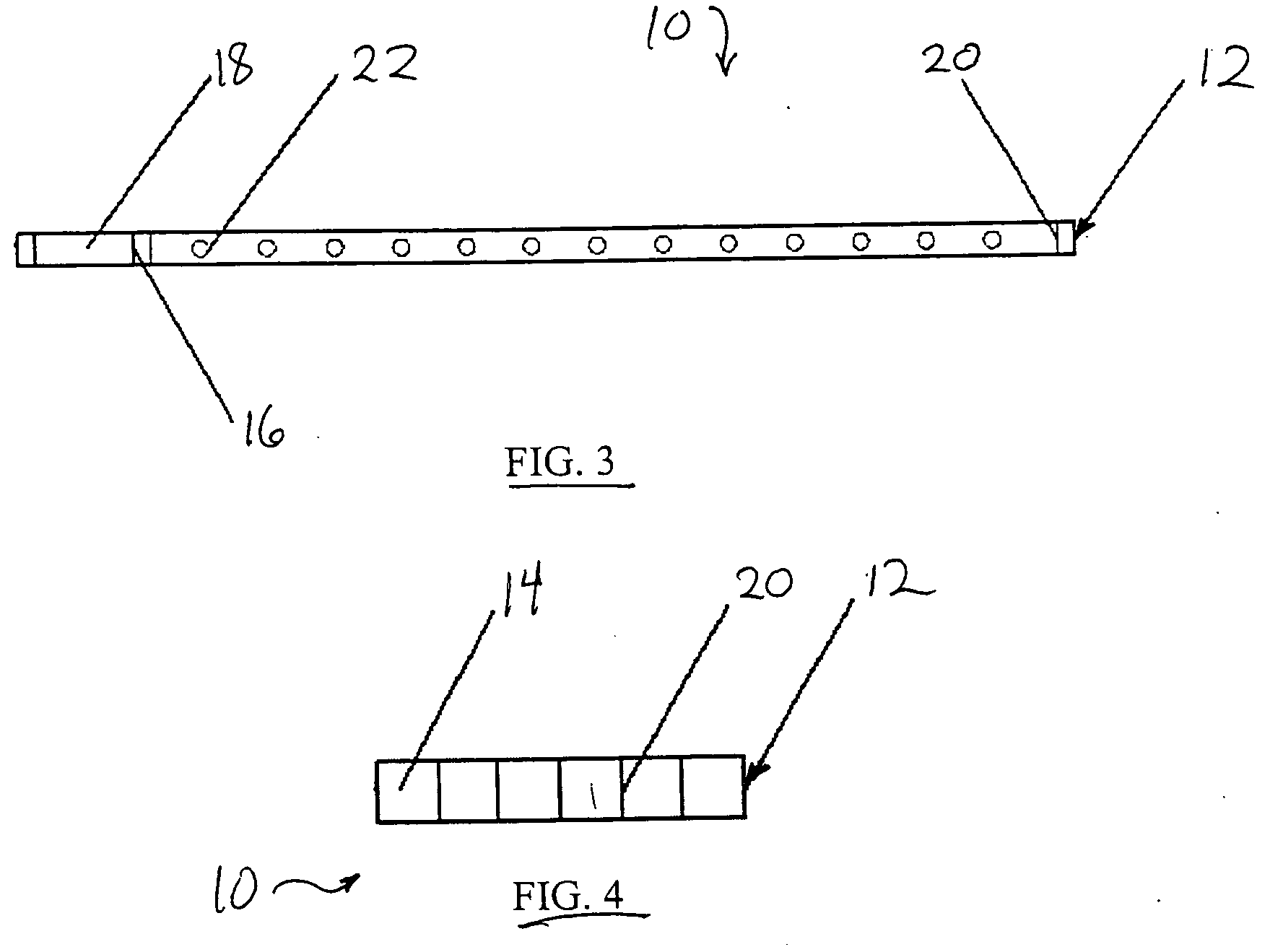Chemiluminescent phototherapy device
a phototherapy device and chemiluminescent technology, applied in light therapy, radiation therapy, therapy, etc., can solve the problems of sudden and severe onset of excess bilirubin, potentially dangerous jaundice, wear protective eye patches, etc., not to reduce or inhibit normal body motion, and high degree of flexibility
- Summary
- Abstract
- Description
- Claims
- Application Information
AI Technical Summary
Benefits of technology
Problems solved by technology
Method used
Image
Examples
Embodiment Construction
[0034] Referring to FIGS. 1-4, there is shown the phototherapy device according to one embodiment of the present invention. The phototherapy device 10 includes a container 12, a dye solution 14, a chamber 16, and an activator solution 18.
[0035] According to the present embodiment, the container 12 is a disposable, flexible bladder made of a material approved for use by the U.S. Food and Drug Administration (FDA). The container 12 is substantially transparent or translucent and includes a plurality of ribs 20, each of which have a plurality of fluid bypasses 22. The ribs 20 provide structural support for the container 12 and maintain the planar shape of the container 12. The fluid bypasses 22 allow the dye solution 14, which is sealed within the container, to pass through the ribs 20. Further, space is provided between the ends of the ribs 20 and the end walls of the container 12 to thereby allow the dye solution 14 to communicate through this space and distribute the pressure in th...
PUM
 Login to View More
Login to View More Abstract
Description
Claims
Application Information
 Login to View More
Login to View More - R&D
- Intellectual Property
- Life Sciences
- Materials
- Tech Scout
- Unparalleled Data Quality
- Higher Quality Content
- 60% Fewer Hallucinations
Browse by: Latest US Patents, China's latest patents, Technical Efficacy Thesaurus, Application Domain, Technology Topic, Popular Technical Reports.
© 2025 PatSnap. All rights reserved.Legal|Privacy policy|Modern Slavery Act Transparency Statement|Sitemap|About US| Contact US: help@patsnap.com



